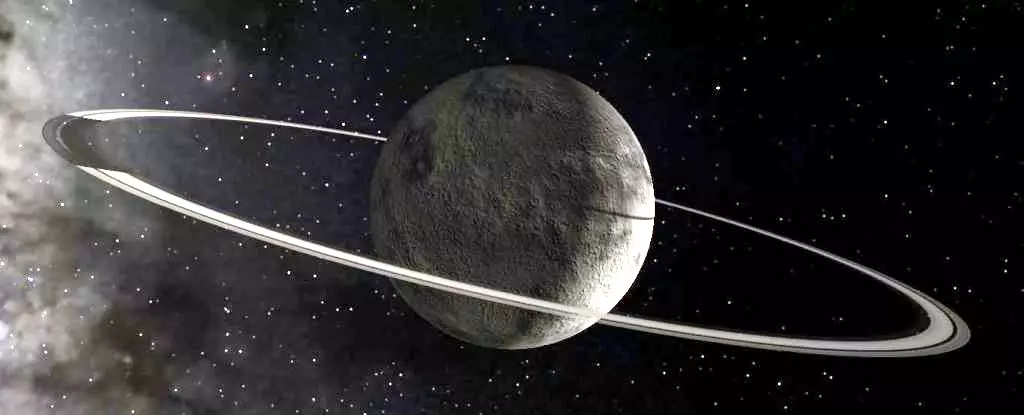In the unexplored realms beyond Jupiter lies a captivating celestial body known as Chiron, a member of the centaur category in our Solar System. Unlike its fellow centaurs, Chiron exhibits an amalgamation of characteristics that have sparked the curiosity of astronomers and planetary scientists alike. Recent observations with the James Webb Space Telescope (JWST) have unveiled intriguing details that set Chiron apart in its enigmatic behavior and composition, highlighting its status as an extraordinary artifact from the Solar System’s formation.
Centaurs are fascinating transitory objects that primarily exist between the orbits of Jupiter and Neptune. They possess unique, hybrid characteristics that blend features of asteroids and comets, rendering them essential subjects in the study of celestial mechanics and planetary formation. Chiron’s behavior, however, defies conventional categorization; at times, it exhibits cometary activity, characterized by the ejection of gas and dust, while also maintaining a ring-like structure around it. Physicist Charles Schambeau from the University of Central Florida aptly describes Chiron as “an oddball when compared to the majority of other centaurs.”
With such complexity, Chiron serves as an investigative center for understanding the unique processes at work in the outer Solar System. Researchers are particularly interested in what drives its varying activity and how it has preserved its primitive characteristics over billions of years. The age-old condition of our Solar System might find reflections in Chiron’s icy and rocky surfaces, leading scientists to probe deeper into its mysteries.
Leading the charge to explore Chiron is a team of researchers helmed by planetary scientist Noemí Pinilla-Alonso from the University of Oviedo in Spain. Utilizing JWST’s advanced observational capabilities, researchers have undertaken the exciting challenge of studying Chiron’s surface and its surrounding coma — the material that envelops the body as it tends to behave like a comet.
By employing near-infrared observations and intricate spectrometric techniques, scientists have been able to discern the composition of the gas and dust expelled from Chiron. While previous studies have identified certain compounds in Chiron’s vicinity, the latest data has expanded the understanding to include carbon dioxide, carbon monoxide, ethane, propane, and notably, methane. The latter’s presence suggests that Chiron’s coma is rich with this crucial yet elusive molecule.
Centaurs like Chiron are believed to originate from even farther reaches of the Solar System, specifically from the realm of Trans-Neptunian Objects (TNOs). These icy remnants hold clues about the initial building blocks of the Solar System, having stayed relatively unchanged since its formation around 4.5 billion years ago. As Chiron approaches the Sun, ice sublimates, revealing surface materials that may be direct products of the primordial Solar System.
The combination of volatiles like methane and water ice hints at Chiron’s preservation of ancient constituents of the solar nebula. Additionally, elements such as ethane and propane suggest chemical processes that have occurred due to solar radiation and thermal dynamics over eons. This intriguing interplay of inherited and evolved materials is crucial for contextualizing the evolution of our solar system’s structure.
The unique properties of Chiron invite myriad questions that challenge conventional models of celestial body behavior. Pinilla-Alonso highlights the peculiarity of active centaurs and emphasizes that these entities might not merely be outliers but potentially key players in a broader context of planetary development.
As Chiron continues its journey, scientists plan to maintain a close watch on this icy wanderer. By monitoring its seasonal transformations and behaviors in greater detail, researchers hope to fine-tune their understanding of the underlying factors that govern the dynamics of centaurs and their evolution. The journey of discovery, fueled by cutting-edge technology and tenacious inquiry, may reveal insights that alter our comprehension of the Solar System’s history and its celestial inhabitants.
Chiron’s unique characteristics and behaviors ignite a passion for exploration that extends beyond the icy depths of space. These observations serve not only to inform our present understanding but also to kindle curiosity about the Solar System’s evolution. Chiron represents a symbol of potential revelation in the vast expanse of space, ever beckoning scientists to query the cosmos and unravel its oldest mysteries.

